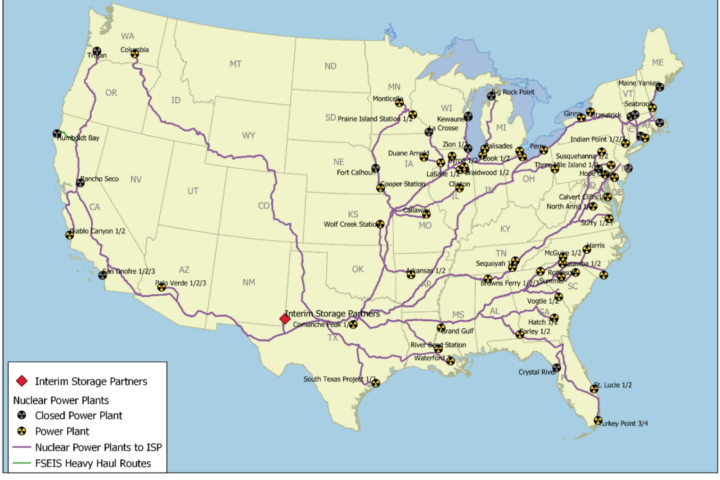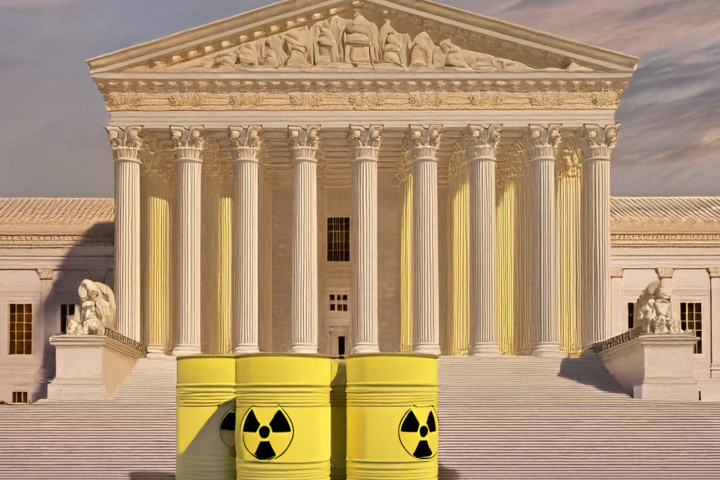Buried in the just released NNSA FY 2015 Performance Evaluation Report (PER) for Consolidated Nuclear Security LLC (the combined contract for Pantex and Y-12 run by Lockheed Martin and Bechtel) is the remarkable note that Pantex sent to the Defense Department a Joint Test Assembly (JTA) of the B61-12 nuclear smart bomb with the wrong tail case. Generally, a JTA is a full scale mock up of the nuclear weapon (just not nuclear armed), in this case for a real life drop test from an Air Force fighter at the Tonapah Test Range in Nevada (which is run by the Sandia Labs).
P. 5: “CNS experienced several issues with the builds of the new B61 JTA Modernization configurations. CNS experienced quality issues on five of the six First Production Units. The most severe of which was the installation of an incorrect tail case on the JTA S/N 602 that was delivered to Department of Defense (DoD). The DoD chose not to proceed with the flight test and returned the unit to Pantex.” [S/N is the serial number of the particular unit.] – End –
How do you put the wrong tail case on the mock bomb, especially given all the hoopla we’ve heard about the B61-12 and the rush to get it into production? Did this involve the now-well known tail fin kit that turns the “dumb” B61 bomb into the precision-guided B61-12?
A few other worthy items from the CNS PER:
• p. 5: Pantex is falling behind in dismantlements, and this is before the announced planned 20% increase in dismantlements. “CNS achieved 101% of dismantlements related to secondaries and 66% of the revised Production Control Document (PCD) baseline schedule. The low performance against the revised PCD baseline schedule resulted in NNSA falling below the trajectory to achieve the 2022 dismantlement goal.”
Secondaries are dismantled at Y-12, with all of the rest of the nuclear weapon dismantled at Pantex. The 2022 dismantlement goal is to dismantle the ~2,500 nuclear weapons scheduled by 2009 for dismantlement. This does not include any weapons retired since then.
• p. 7: “CNS did not meet the majority of the expectations for scheduled surveillance activities, deliverables, and requirements as documented within each applicable weapons system approved Integrated Weapon Evaluation Team (IWET) Plans and associated directive documents.”
Rigorous surveillance is the prerequisite for maintaining stockpile safety and reliability (the claimed rationale for the Stockpile Stewardship Program), but has chronically suffered lower prioritization.
• p. 10: “W76-1 LEP: CNS achieved 101% of the secondary production schedule, met the military shipment schedule, but only achieved 85% of the total FY15 delivery commitment to the Department of Defense.”
This doesn’t bode well for future Life Extension Programs that are growing only more complex and ambitious.
• p. 11: “CNS is behind schedule on pit recertification projects and is working on recovery plans. The CNS delays have not adversely impacted the B61-12 schedule. However, if delays continue the impacts to the B61-12 schedule are certain.”
• p. 14: The future uranium casting process for the Uranium Processing Facility is still unproven.
“CNS did not fully meet expectations on the use of the production microwave caster in [Building] 9212 [at Y12]. This is partially due to equipment issues including the stack 11 filter issues and a failure in the microwave’s bottom lift assembly. Unfortunately, CNS was unable to recover the schedule. Running the microwave caster early and often is valuable since this technology represents the future Uranium Processing Facility (UPF) casting capability.”
• p. 24: Pantex and Y-12 are beginning “additive manufacturing” (3-D printing) of nuclear weapons components. What are the future proliferation consequences of this?
“CNS began advancing manufacturing capabilities through additive manufacturing initiatives. CNS procured and received a Connex 500-UV Resin multi-color, large-scale plastic machine. This machine will be used for prototyping, proof of principle, displays and cutaways, and training aids. CNS also procured its first metal additive machine and installation will begin at Y-12 in July. Once R&D material testing is complete, the first area of focus will be tooling applications. A second, identical machine has been procured for Pantex and will be delivered late summer for similar applications.”
• p. 35: CNS, composed of Lockheed Martin and Bechtel, gave the construction contract for the Uranium Processing Facility at Y-12 to Bechtel. There was no competition that I heard about.
Concerning Bechtel’s track record, it took the Chemistry and Metallurgy Research Replacement Project at LANL from an original $600 million to $6 billion, and the Waste Treatment Facility at Hanford from $3.5 billion to $13 billion, and it may still never work.
• p. 42: “While NNSA has noted the CAS [Contractor Assurance System] reports have gotten more self-critical over FY15, the CNS end of year self-assessment was not self-critical. Given all the issues this year that impacted mission, it was unusual that the report was not more introspective.”
In fact, CNS gave itself a glowing self-assessment, which NNSA did not agree with. In all, NNSA awarded CNS $11.3 million out of a possible $20 million in incentive fees, along with a fixed fee of $31 million. For NNSA, that’s a pretty big slap on the wrist.
The Performance Evaluations Reports are available at https://nnsa.energy.gov/aboutus/ouroperations/apm/perfevals
NukeWatch successfully sued in 2012 to get the reports publicly released, but NNSA was misbehaving again and did not release the FY 2015 PERs until now. These reports are invaluable for insight into what NNSA sites actually do and related contractor performance. The reports are also becoming increasingly critical of contractor performance ever since the major security incident at Y-12 and the closure of the Waste Isolation Pilot Plant caused by an errant radioactive waste drum from Los Alamos.


